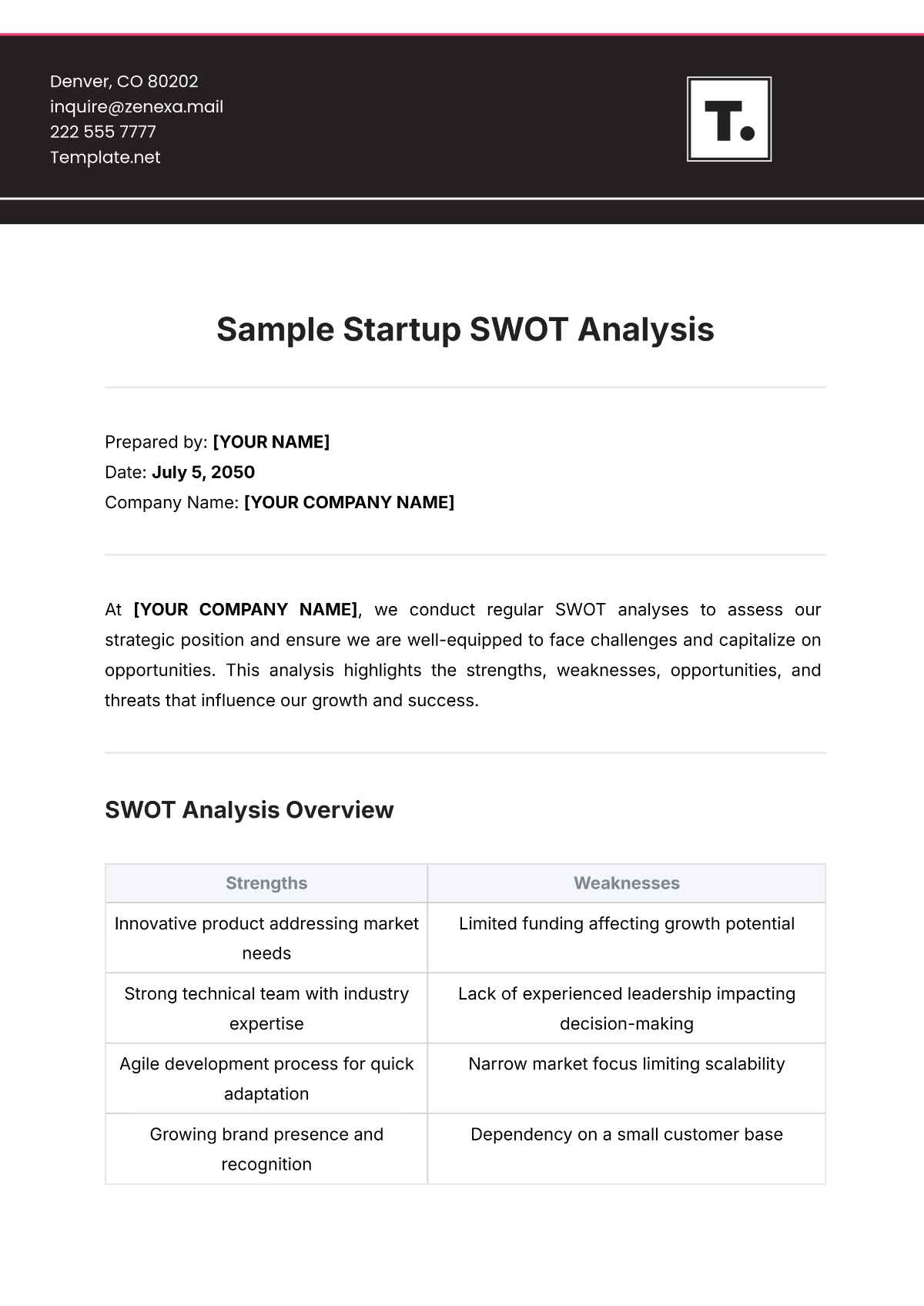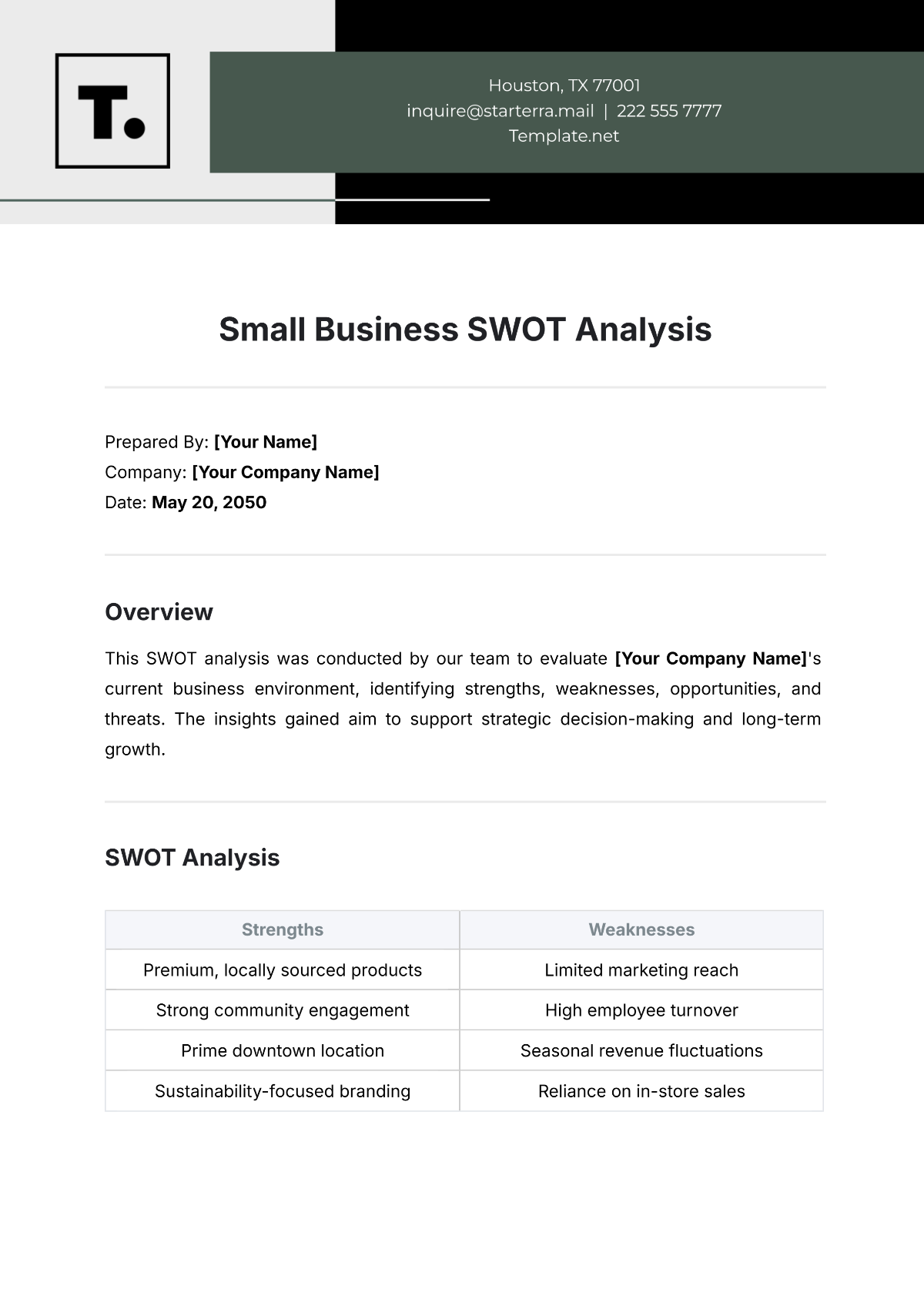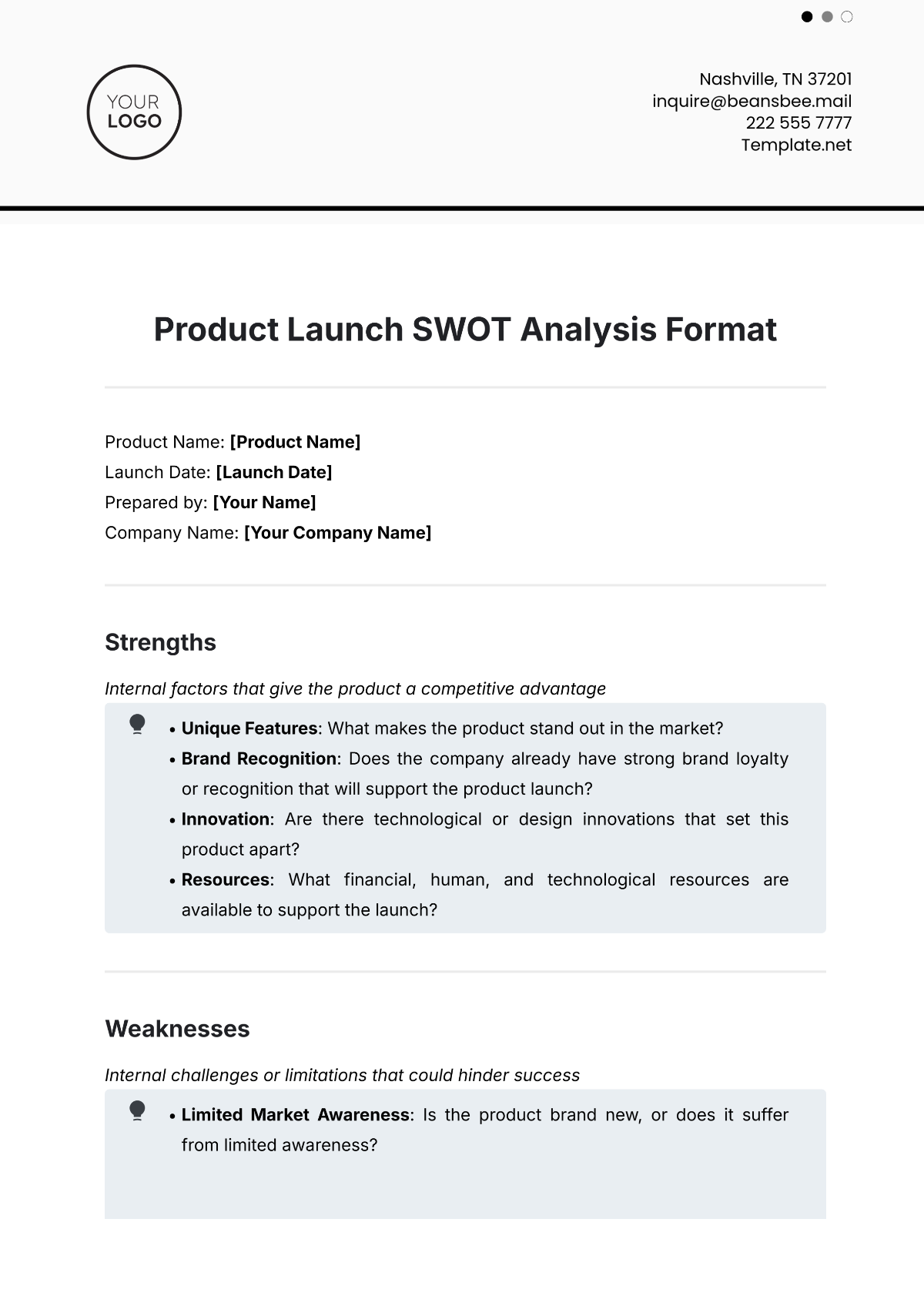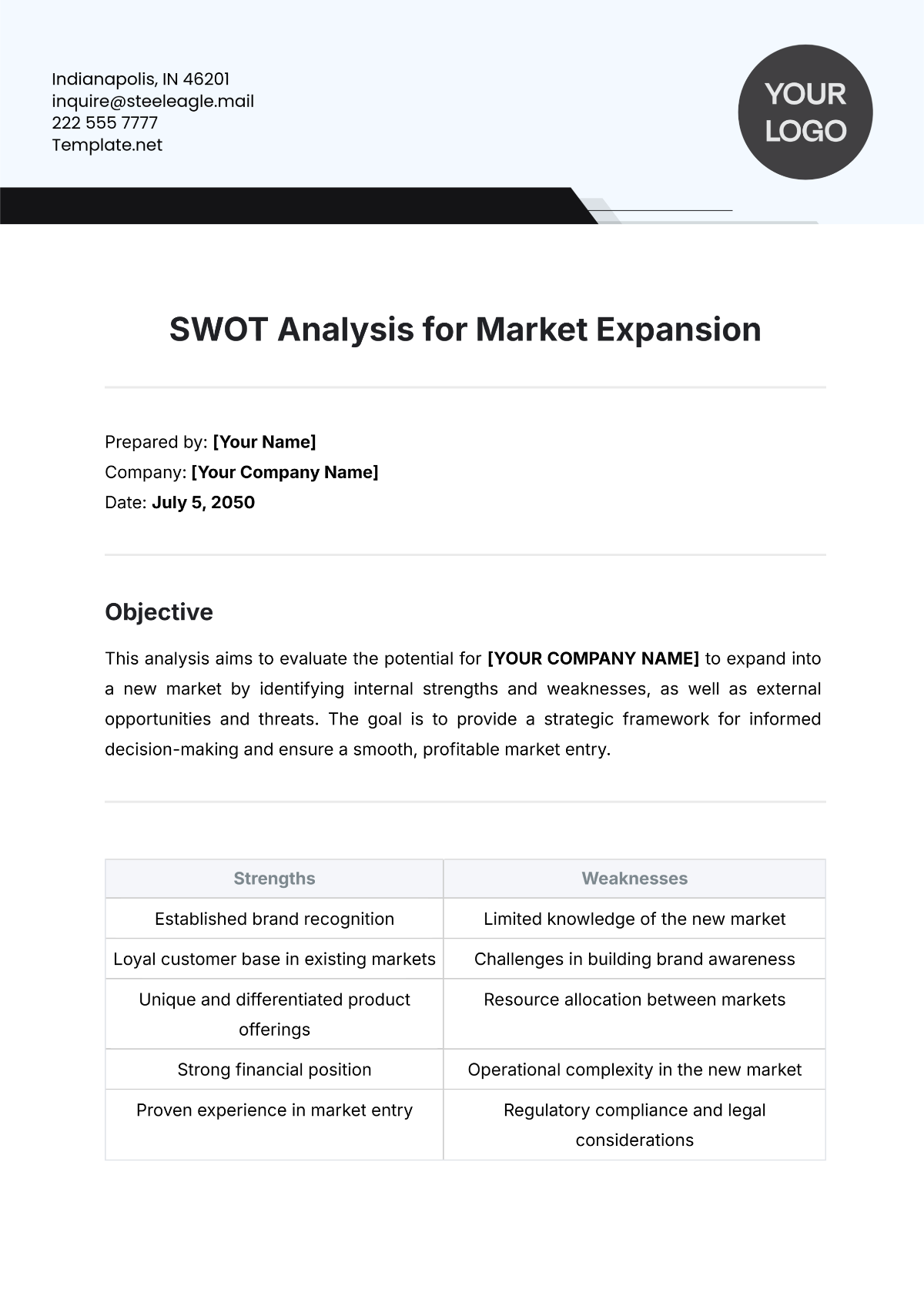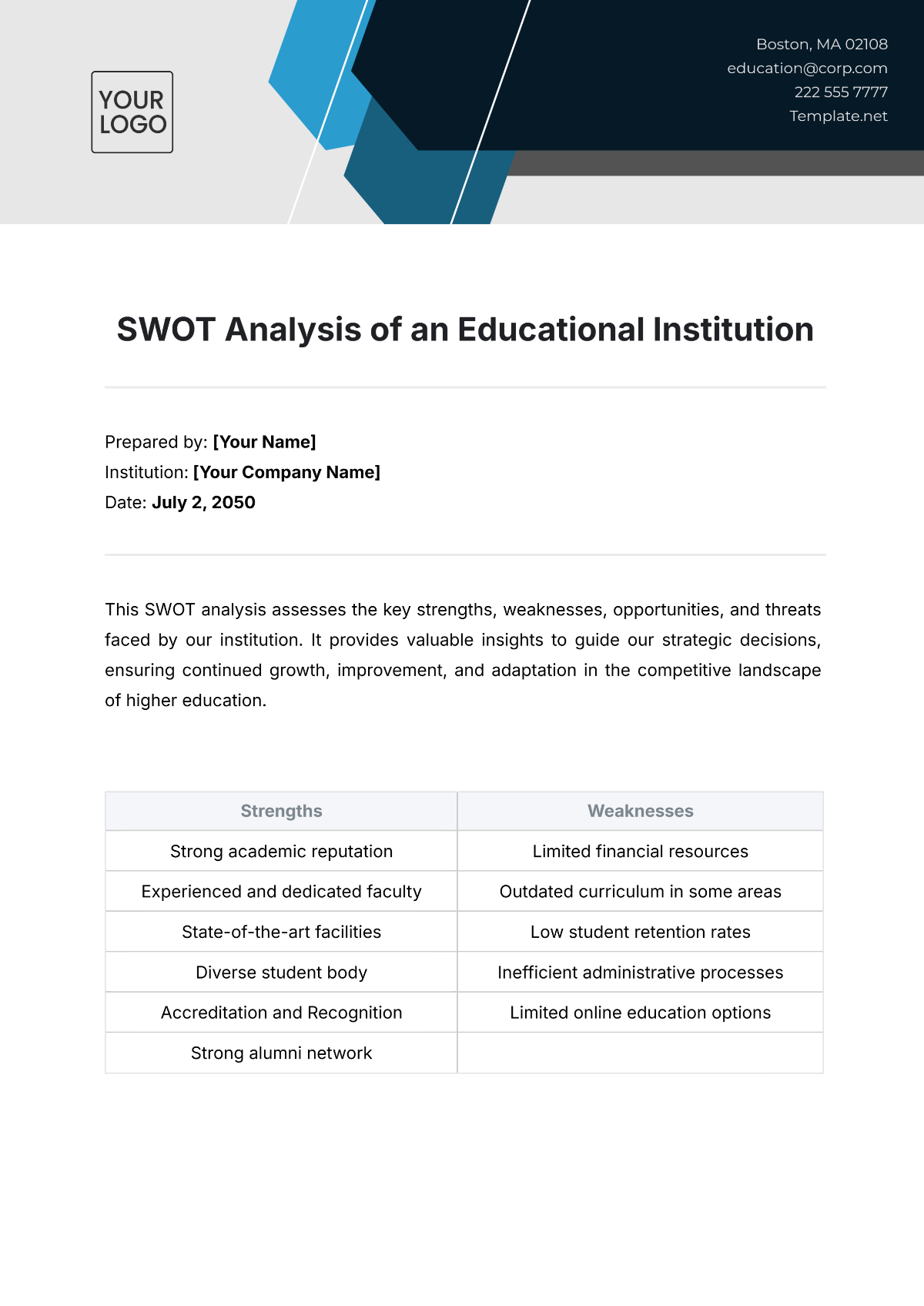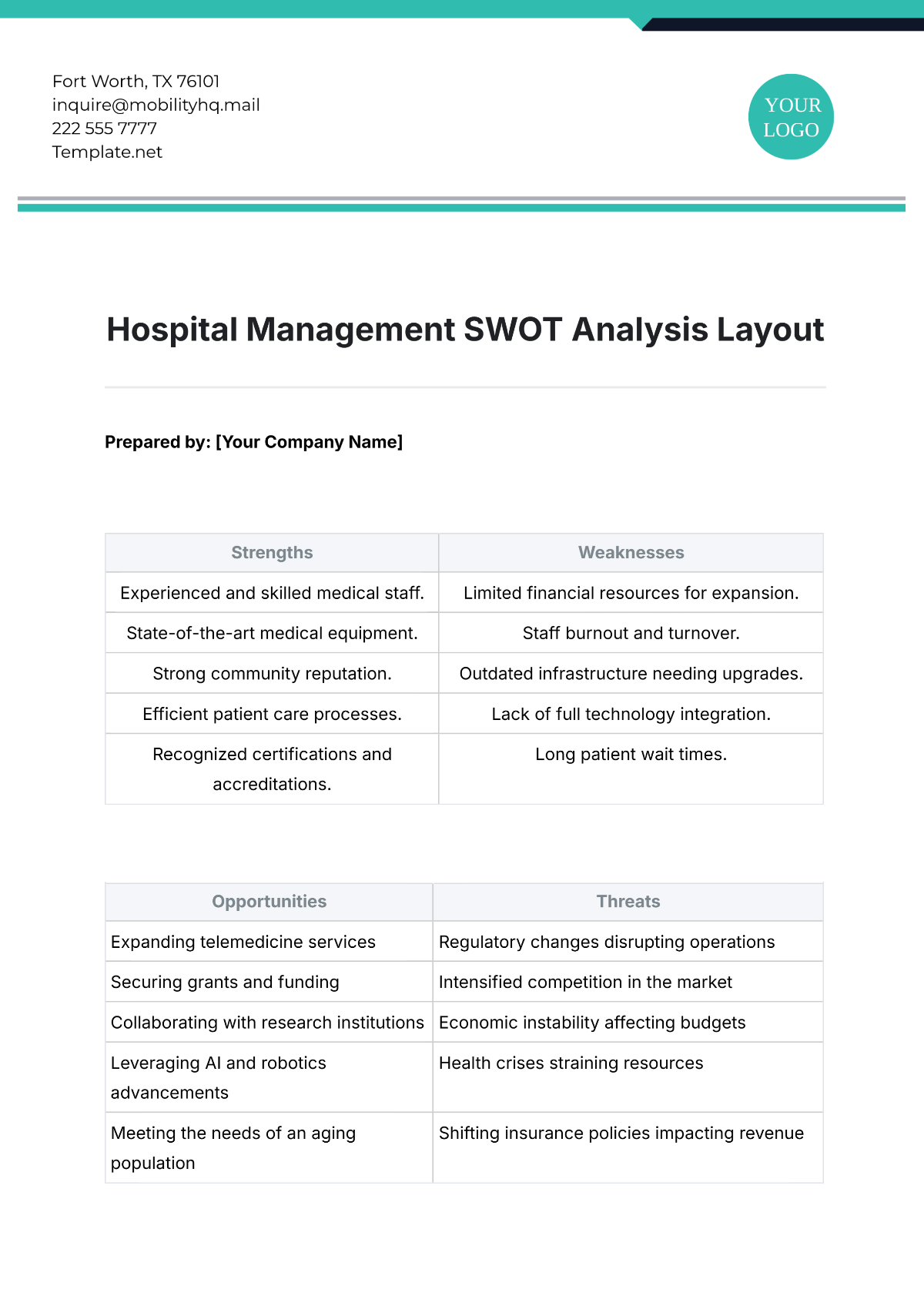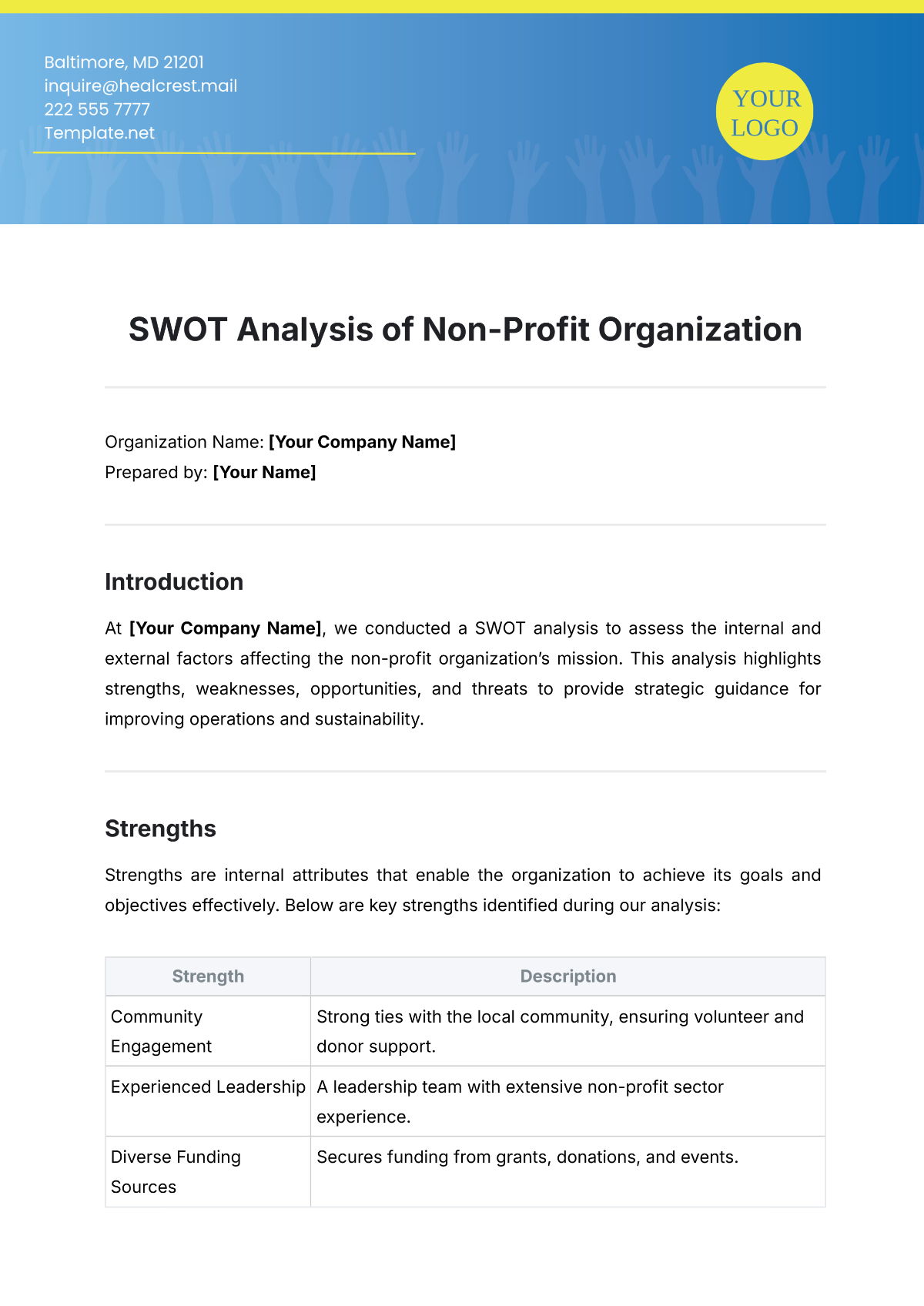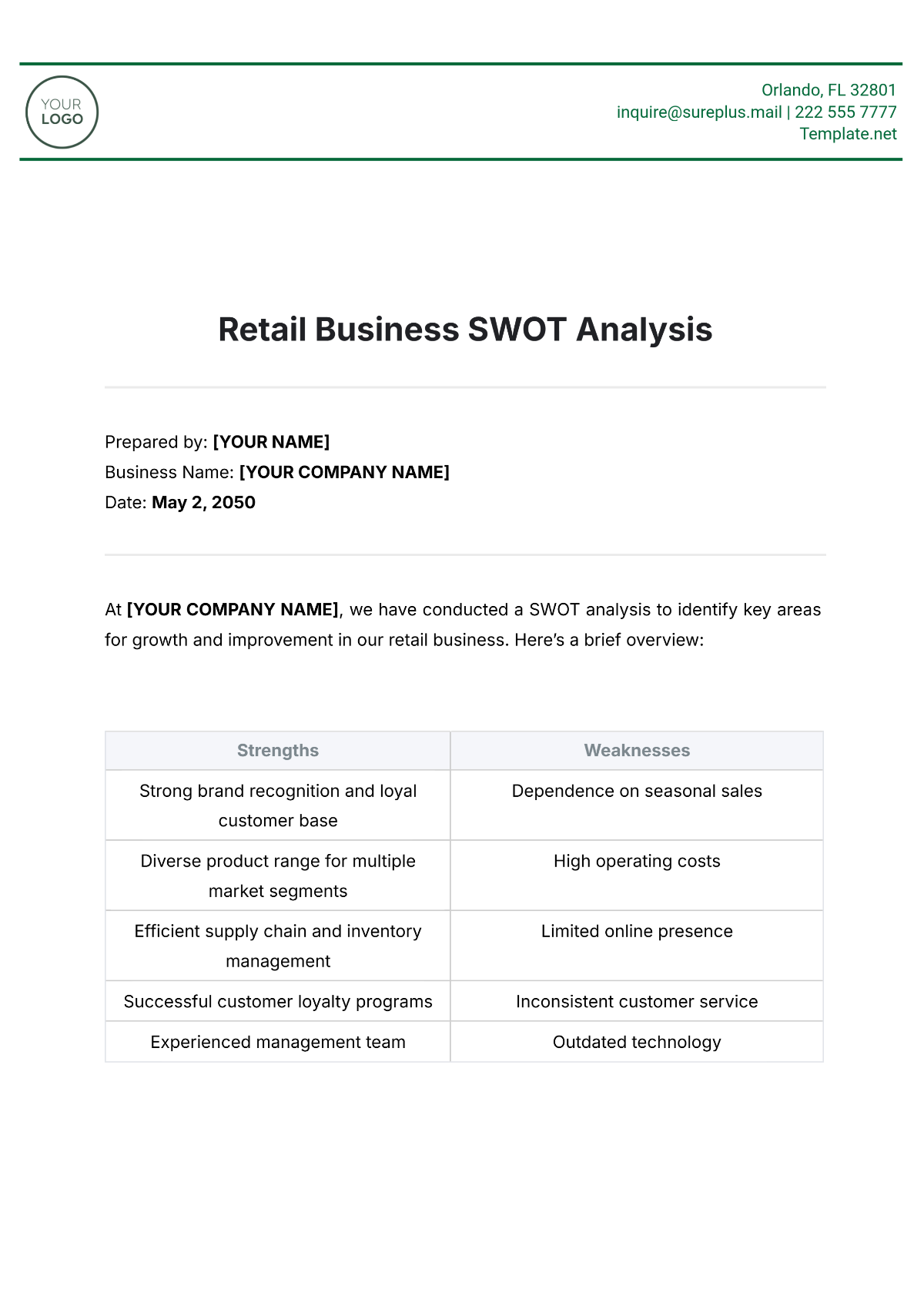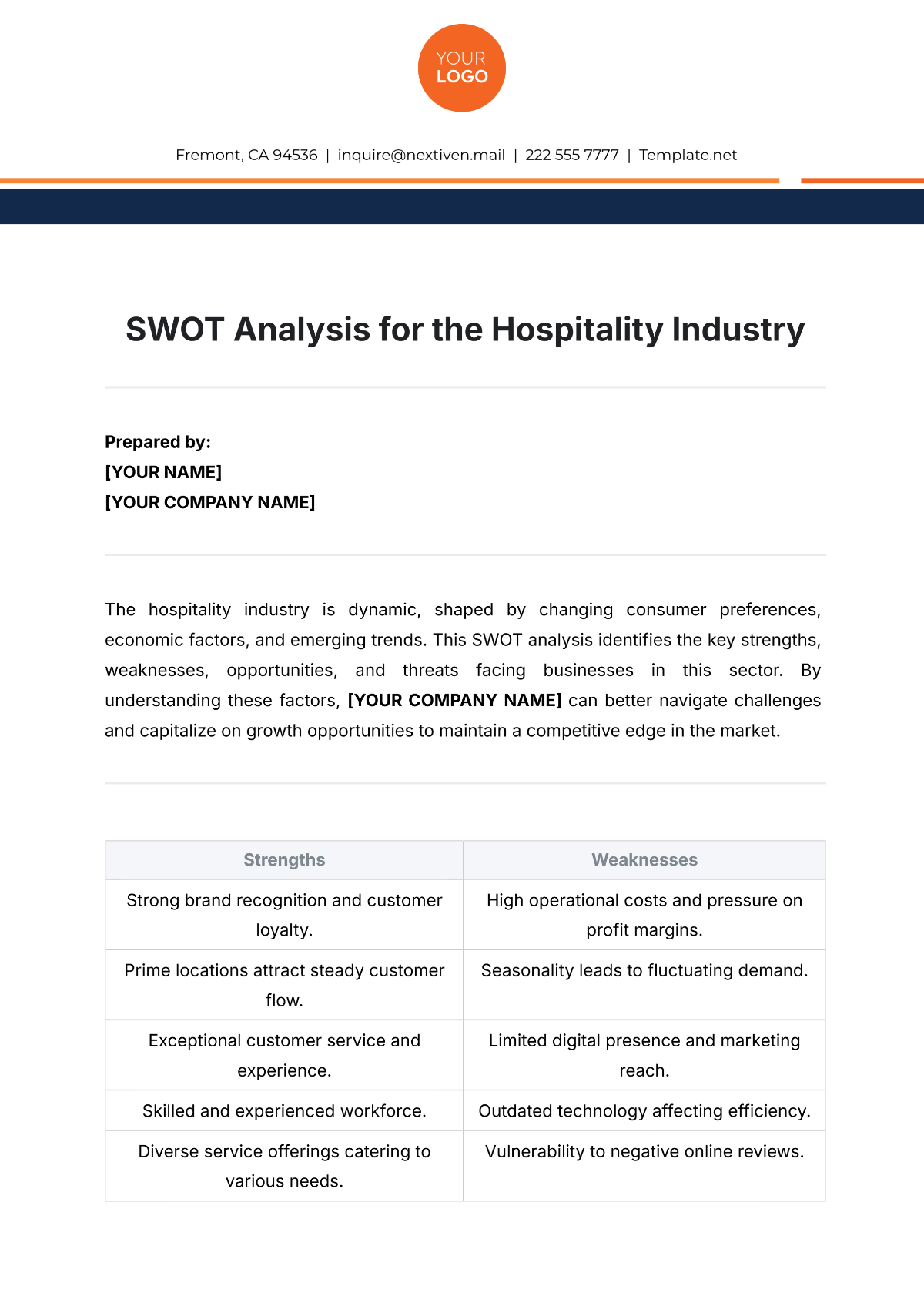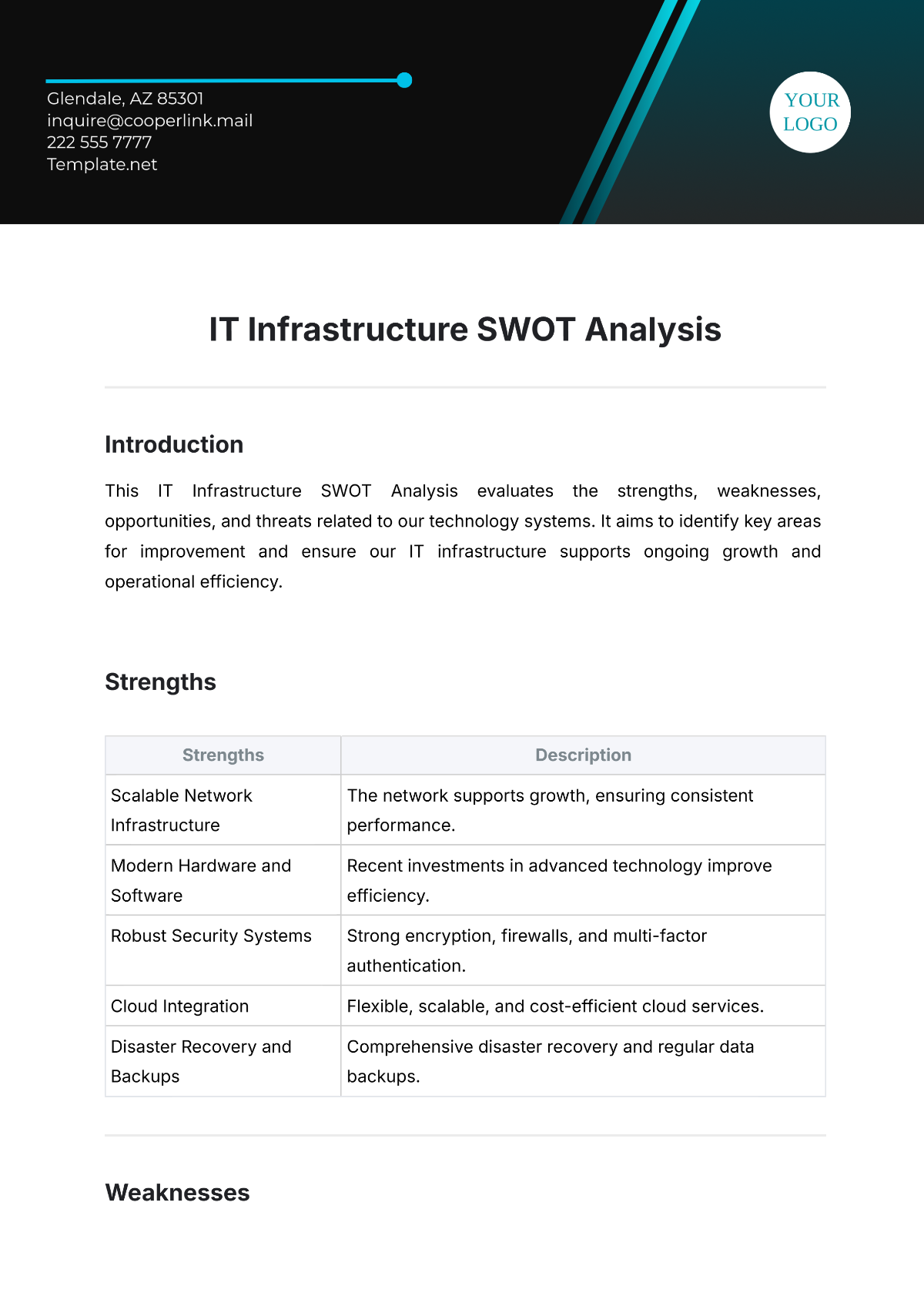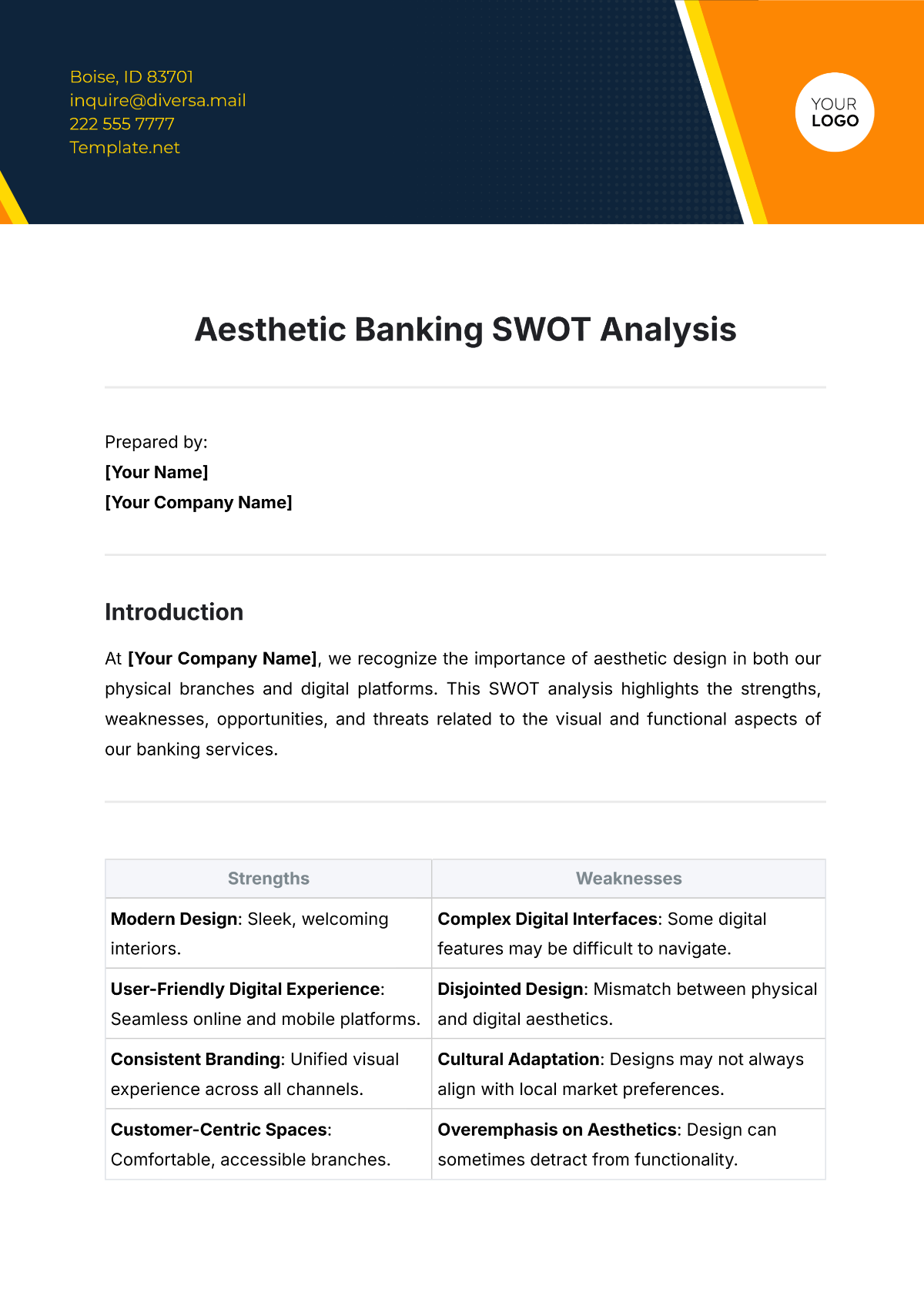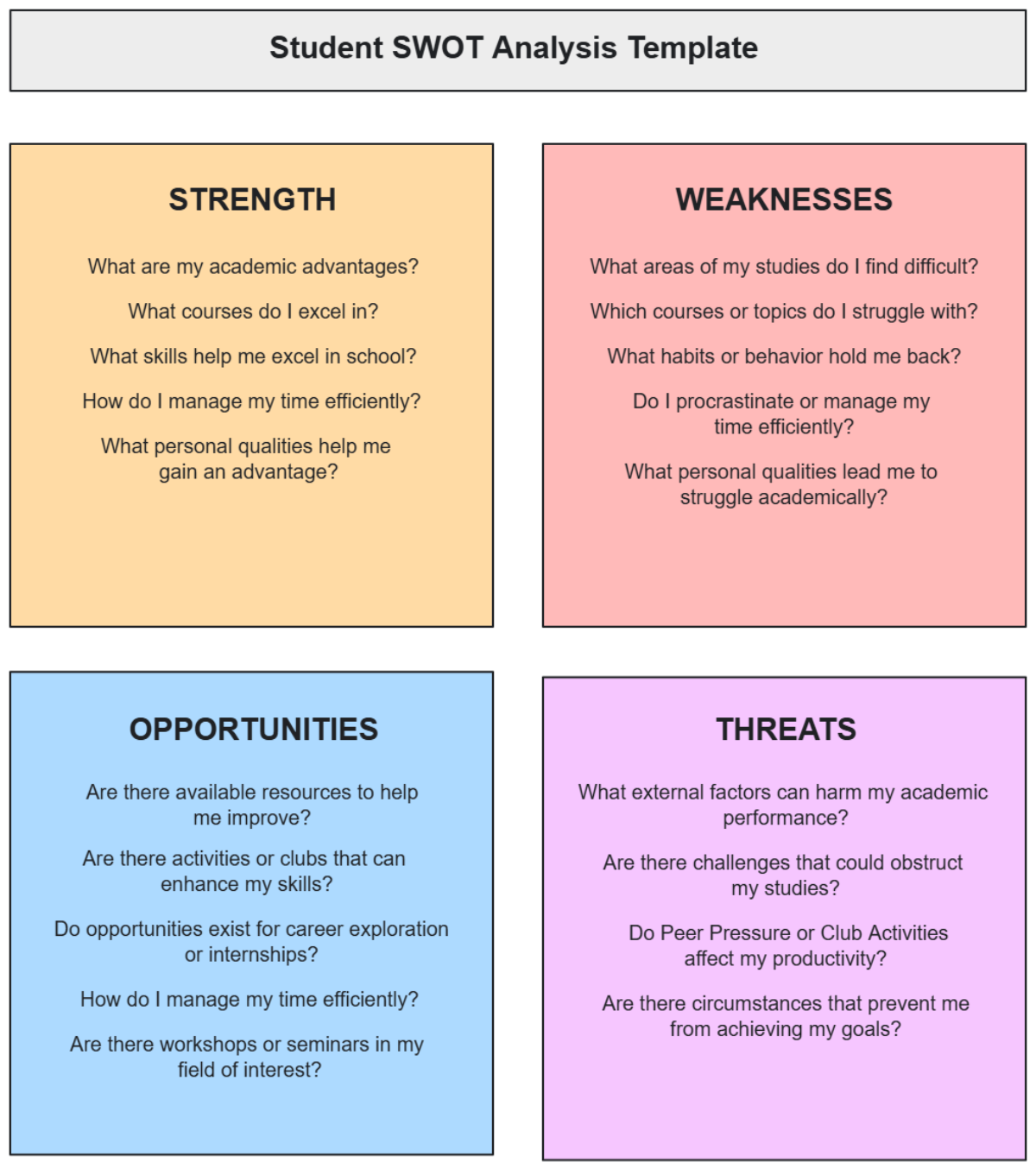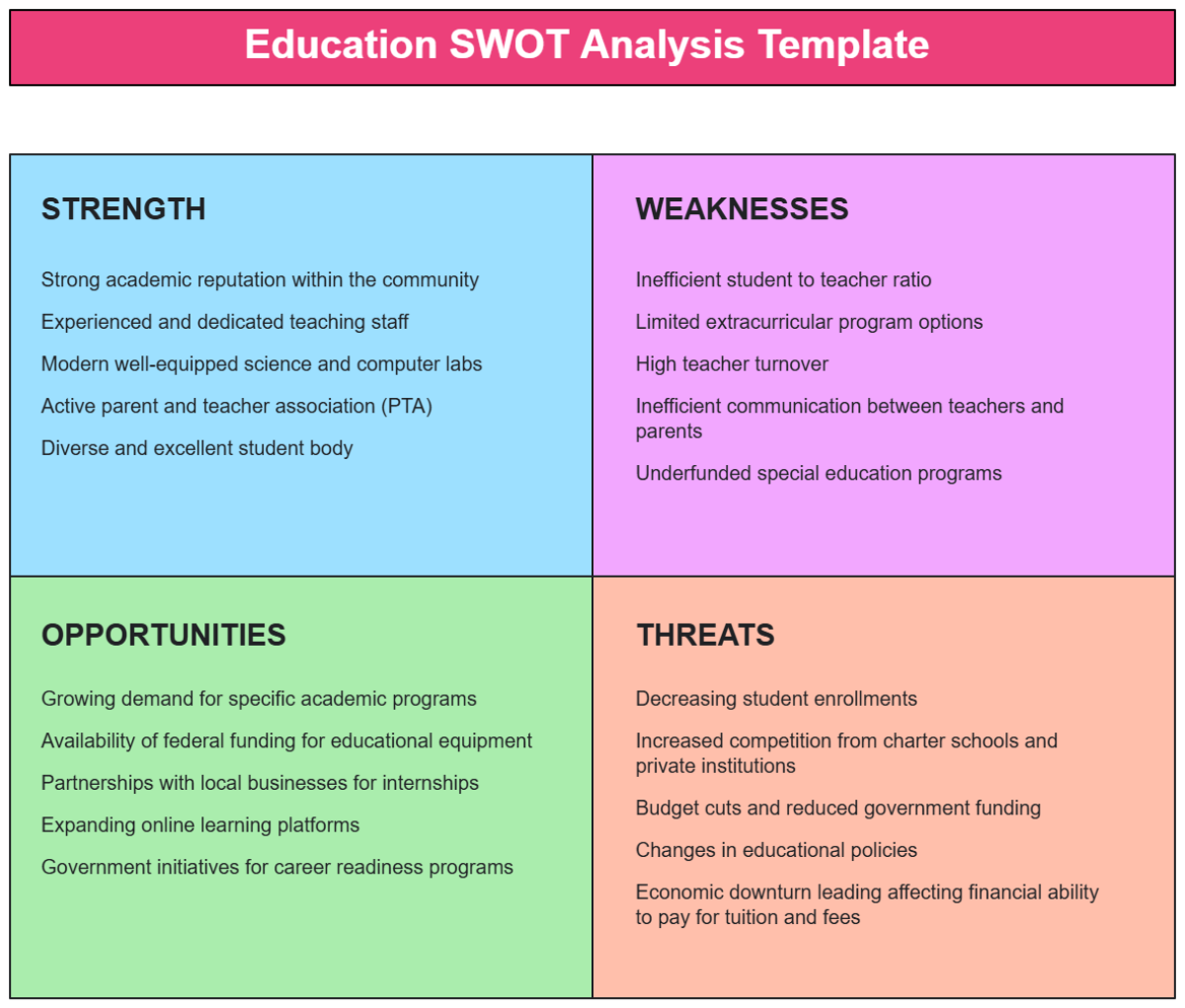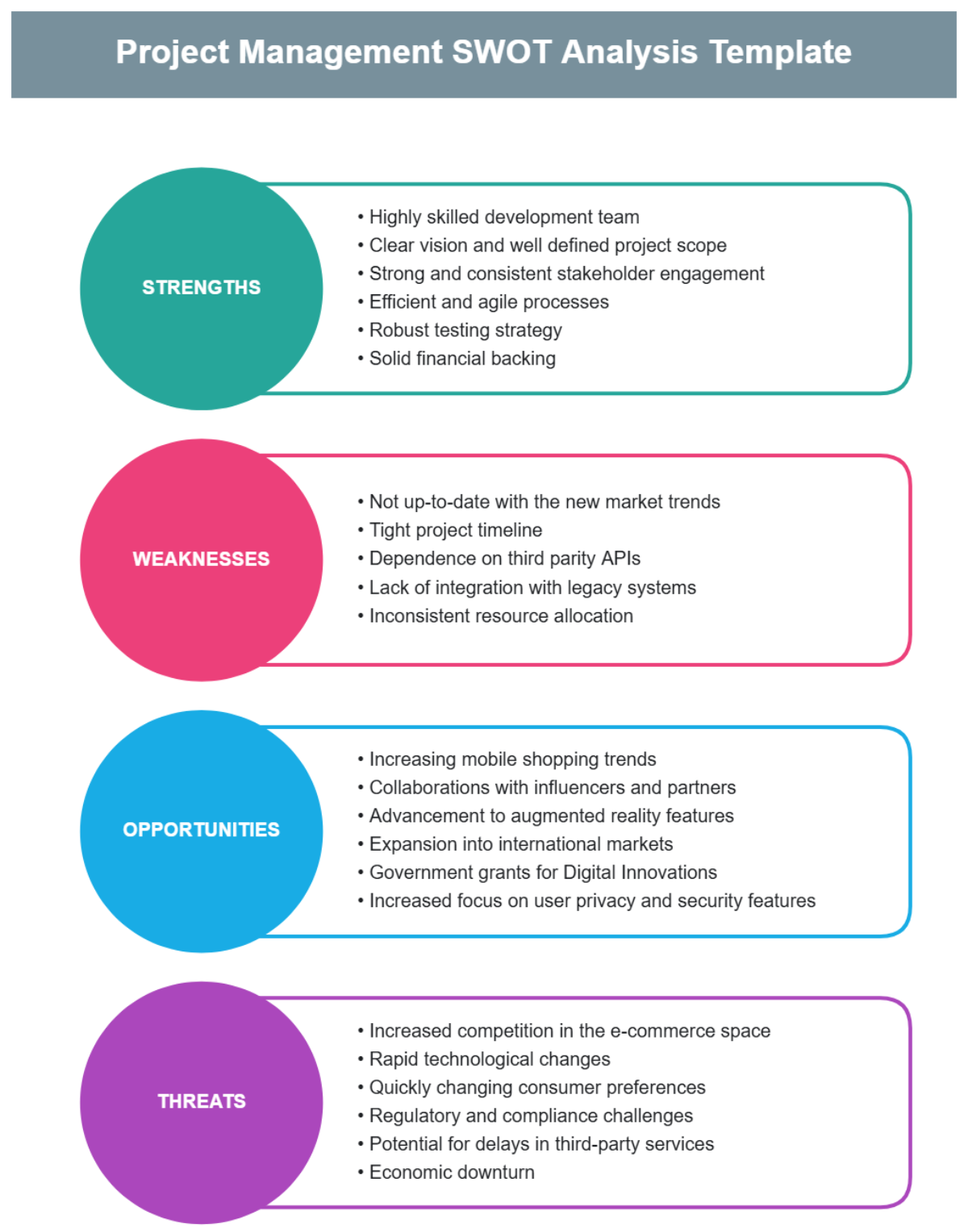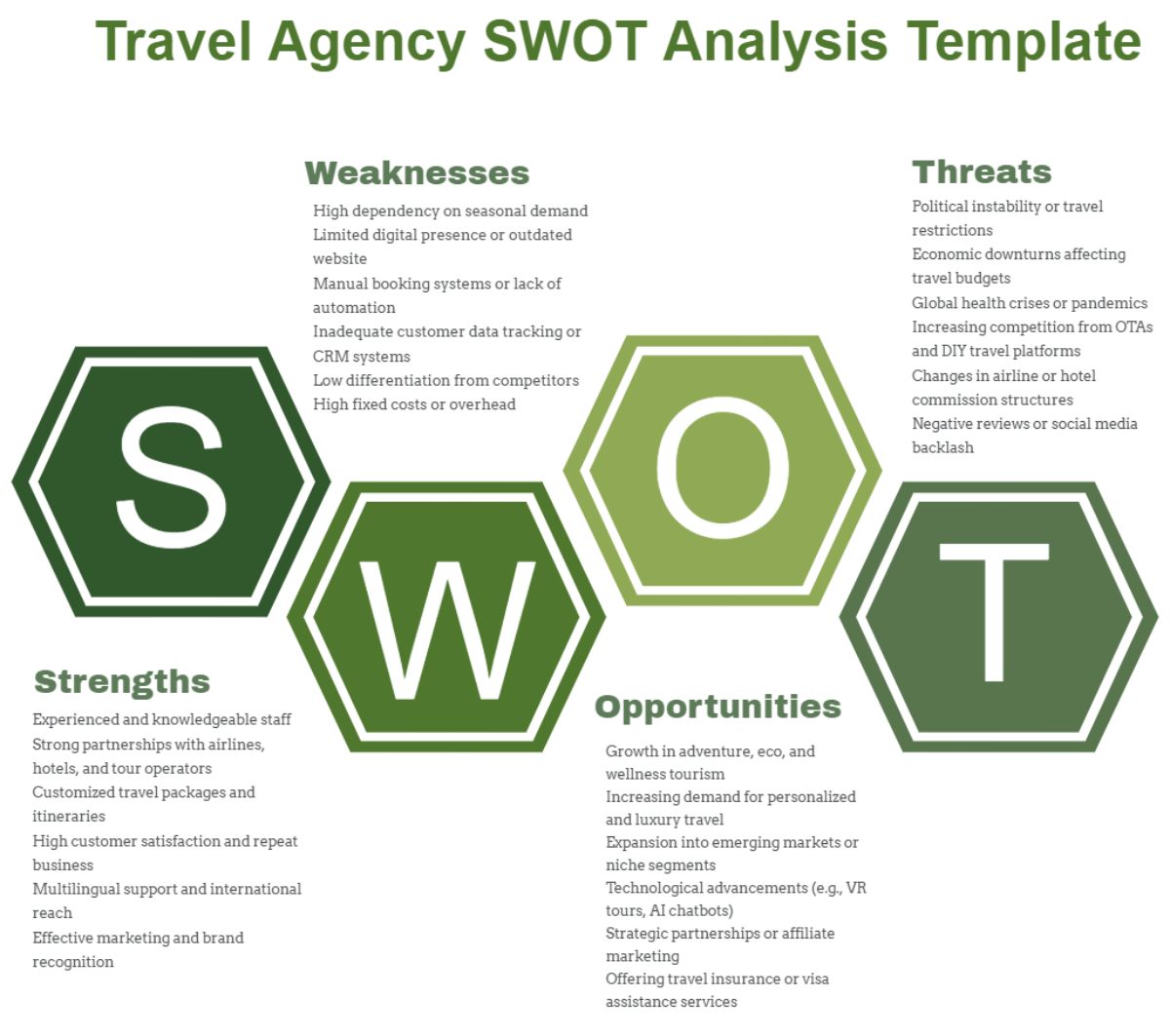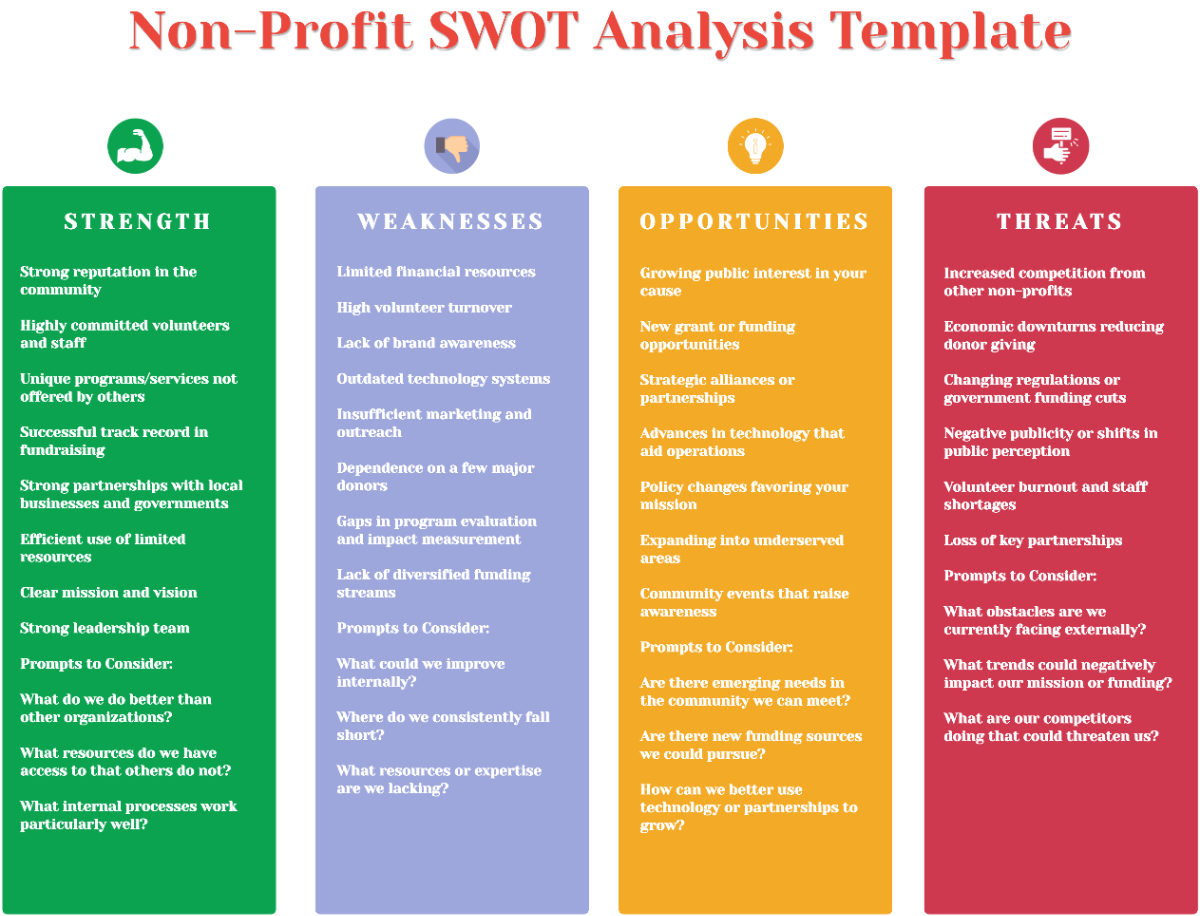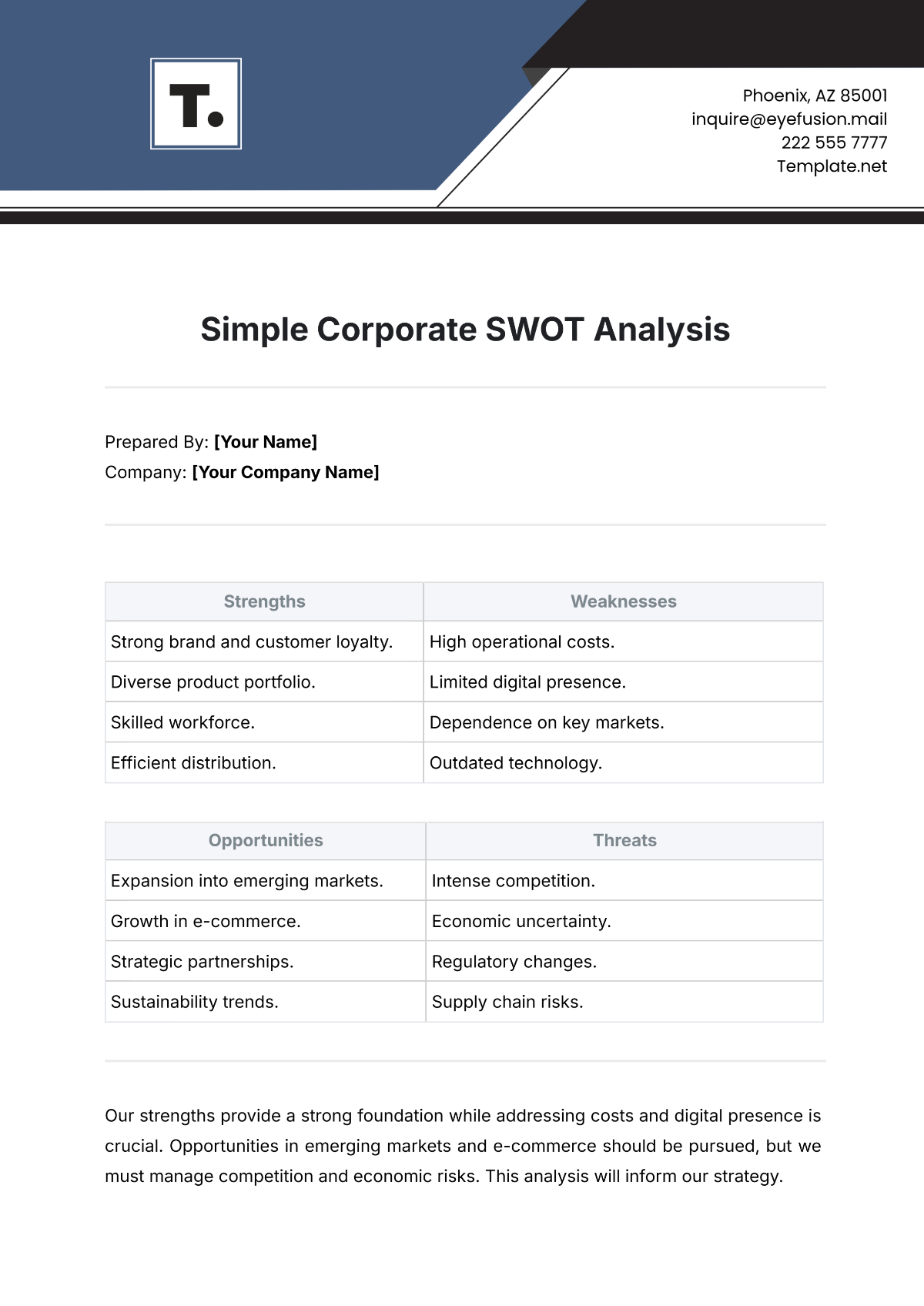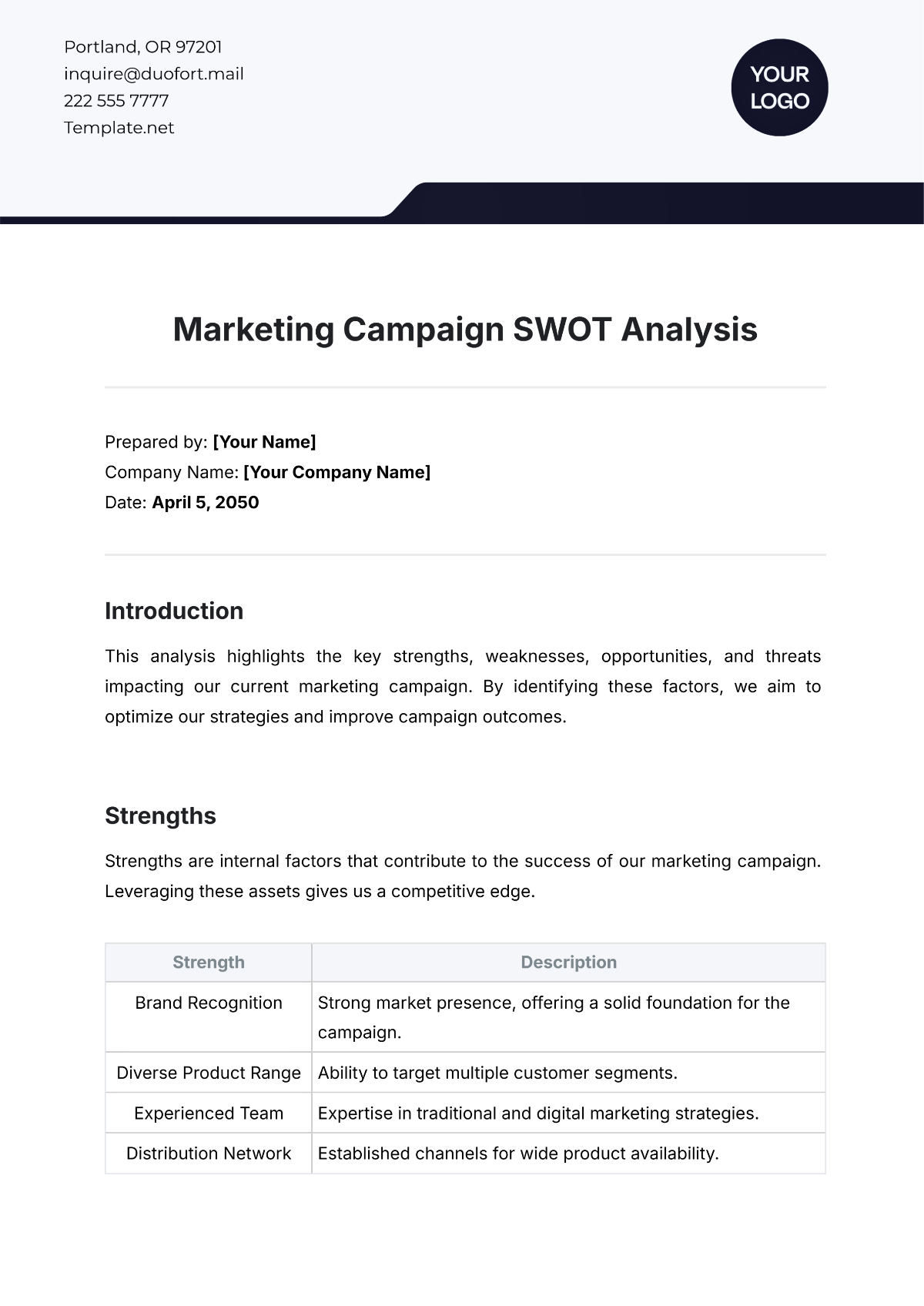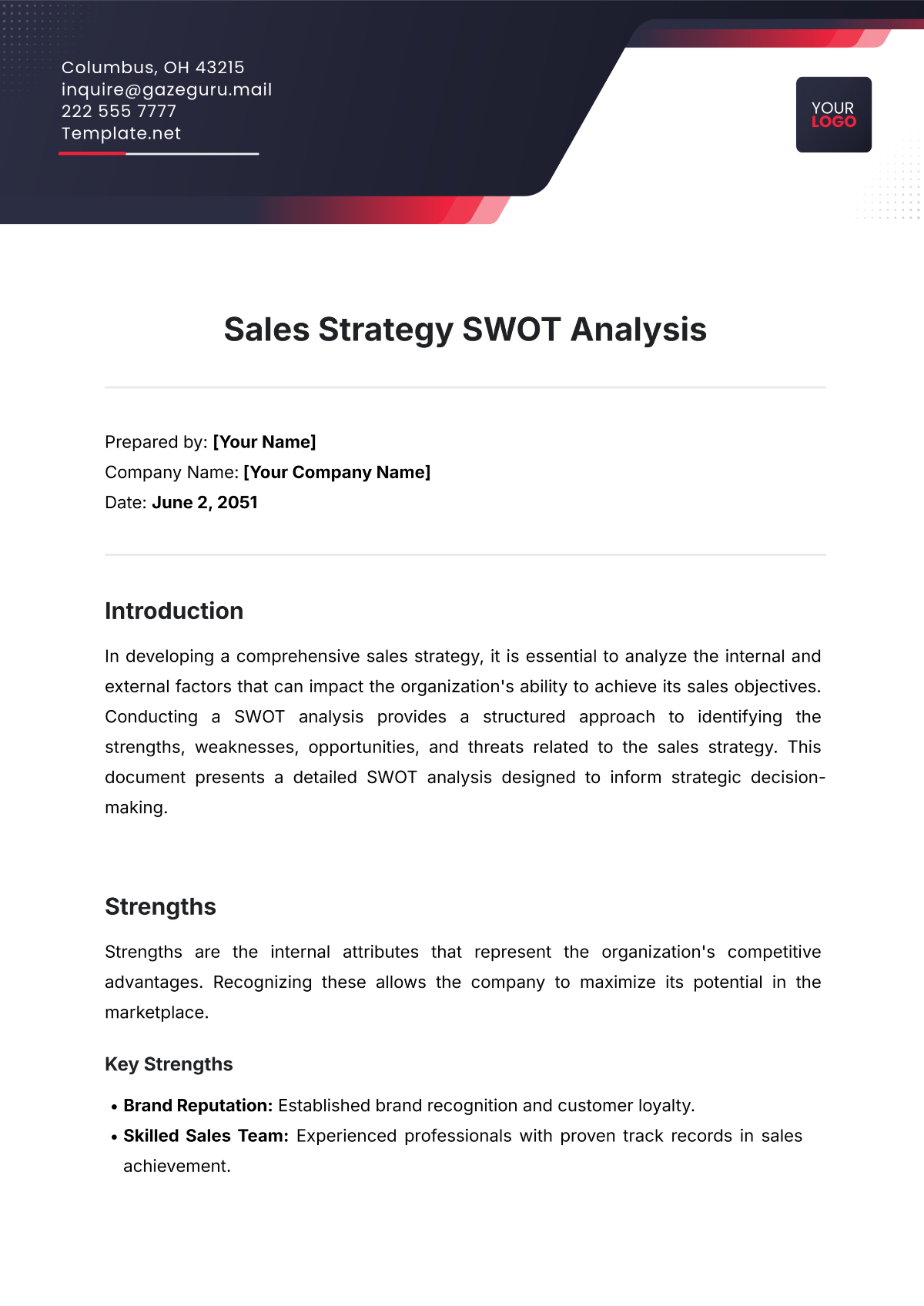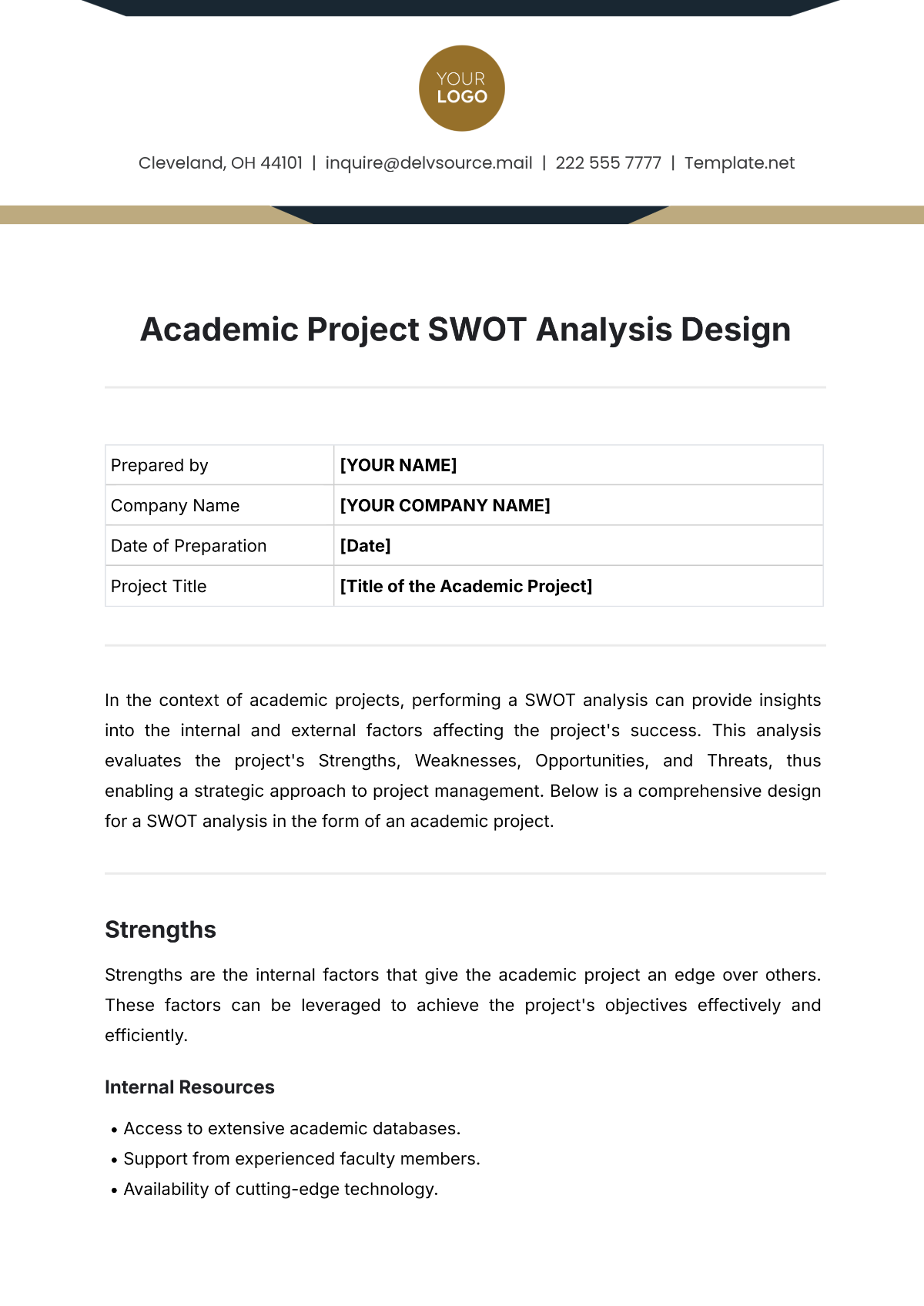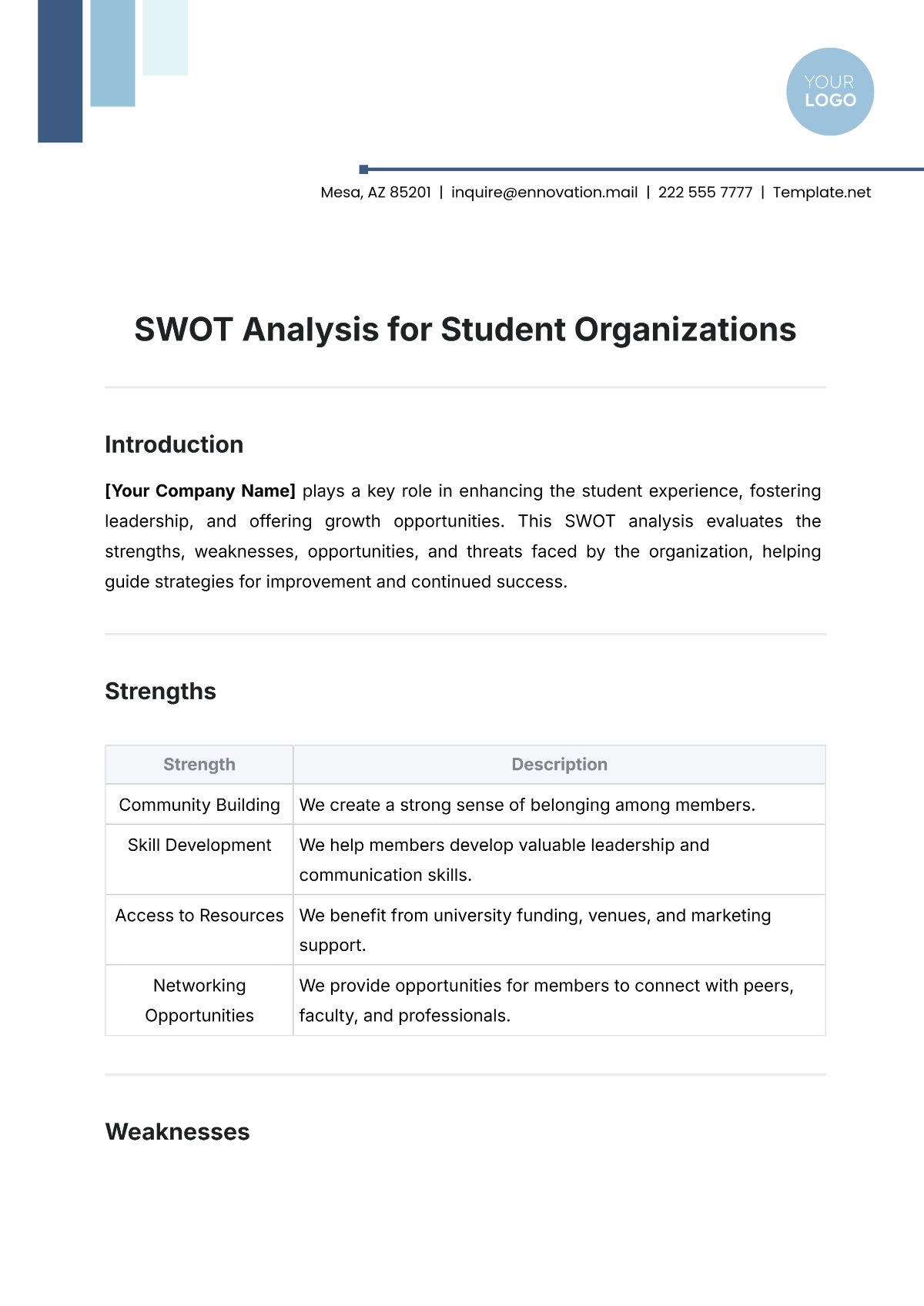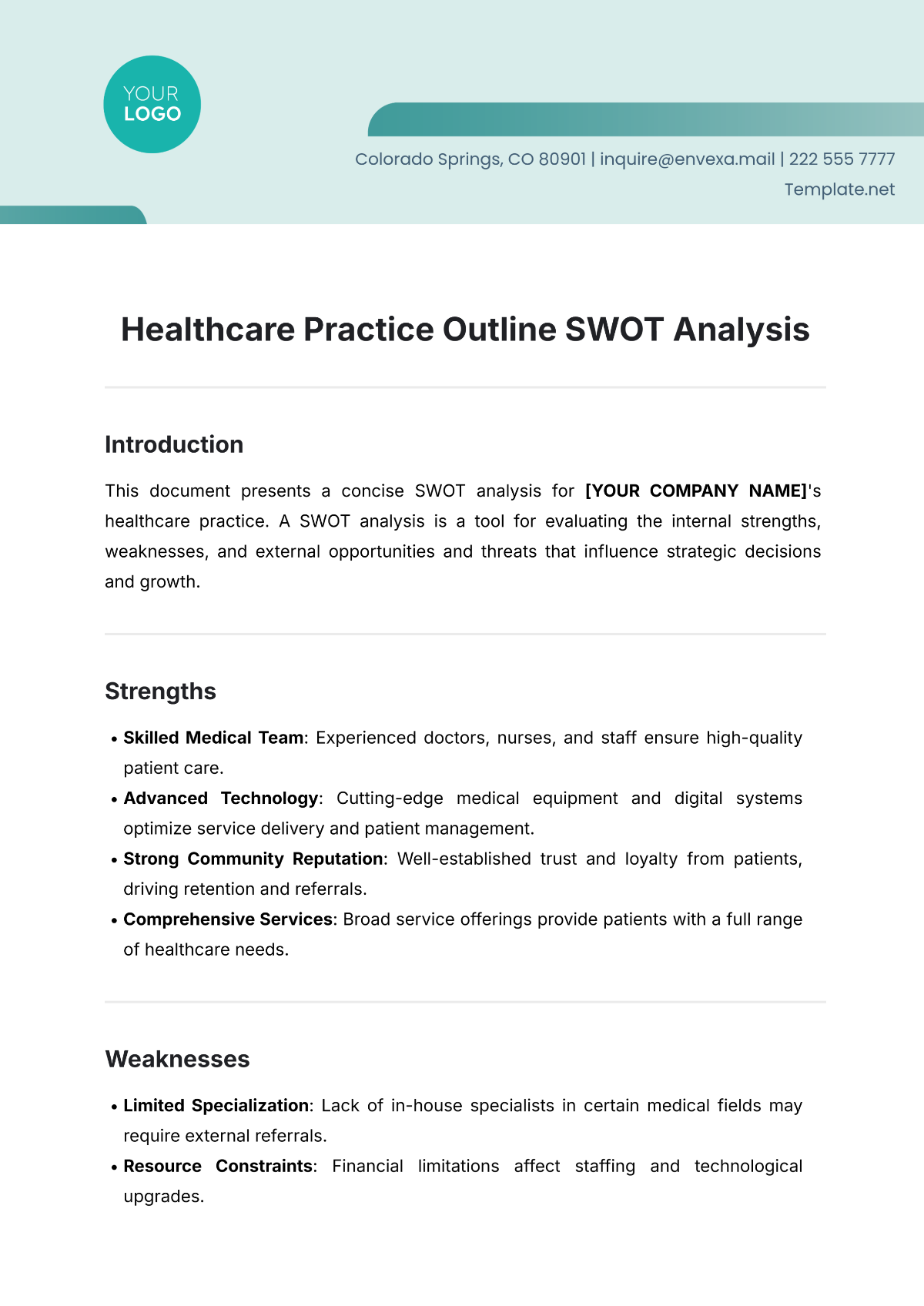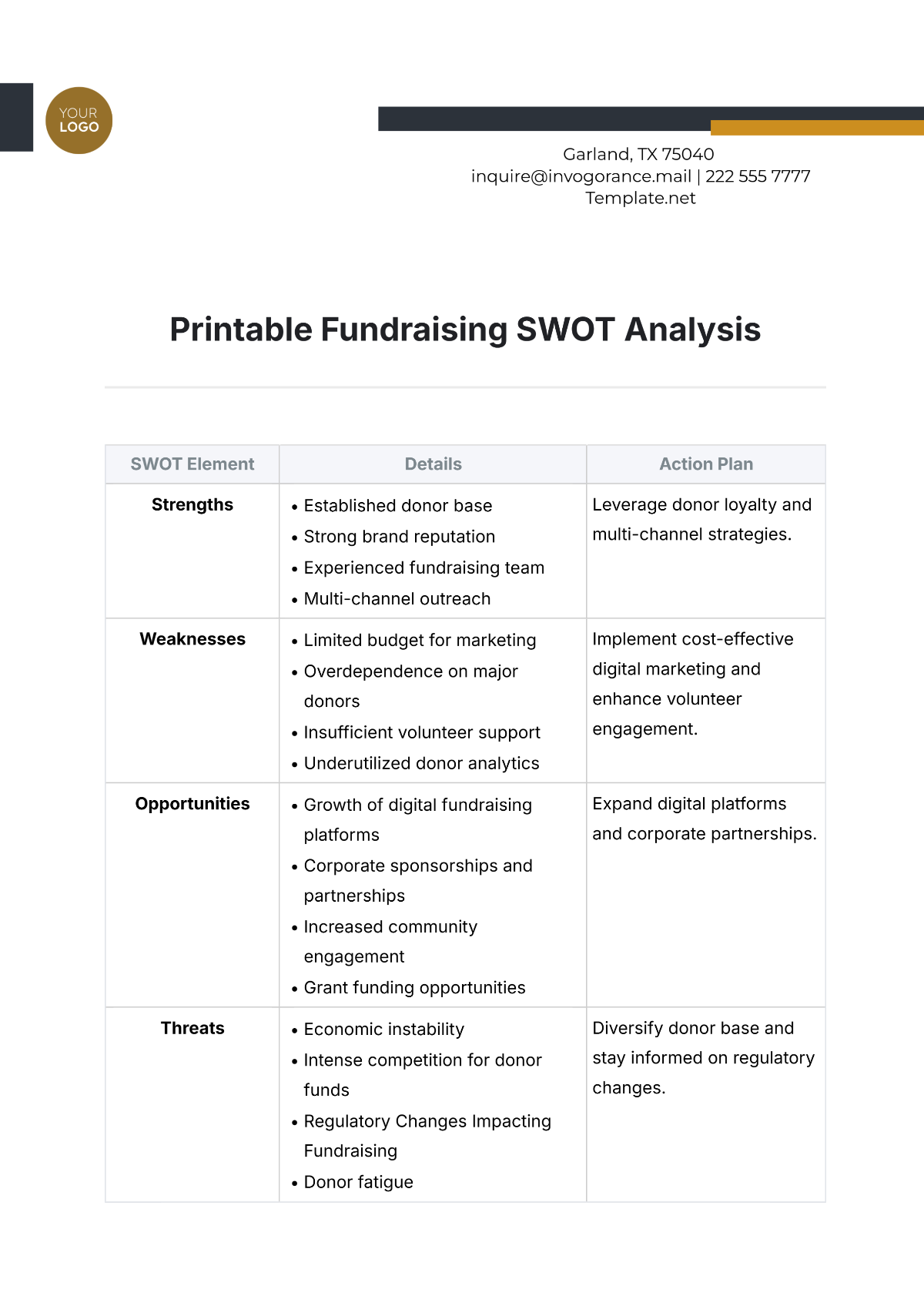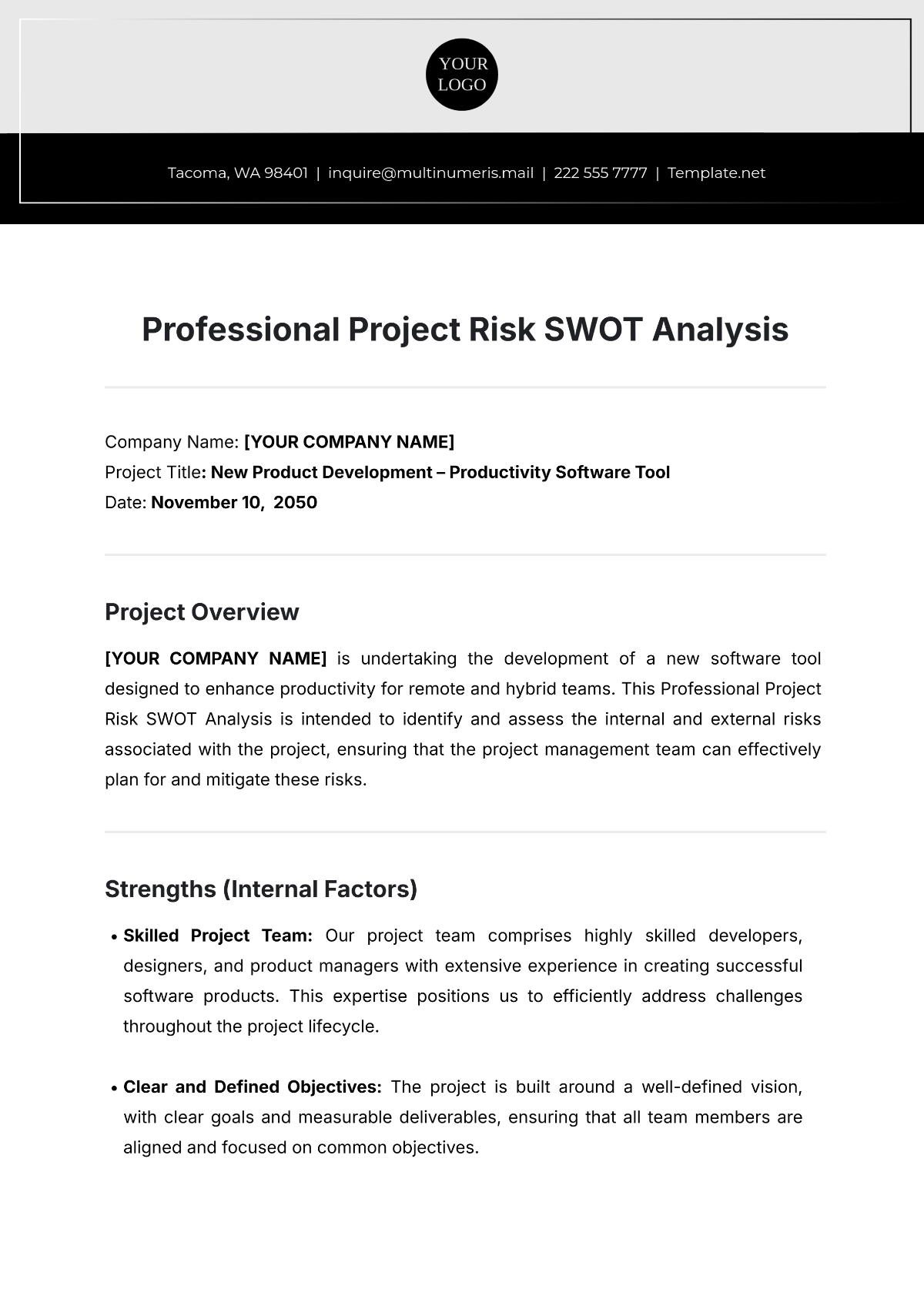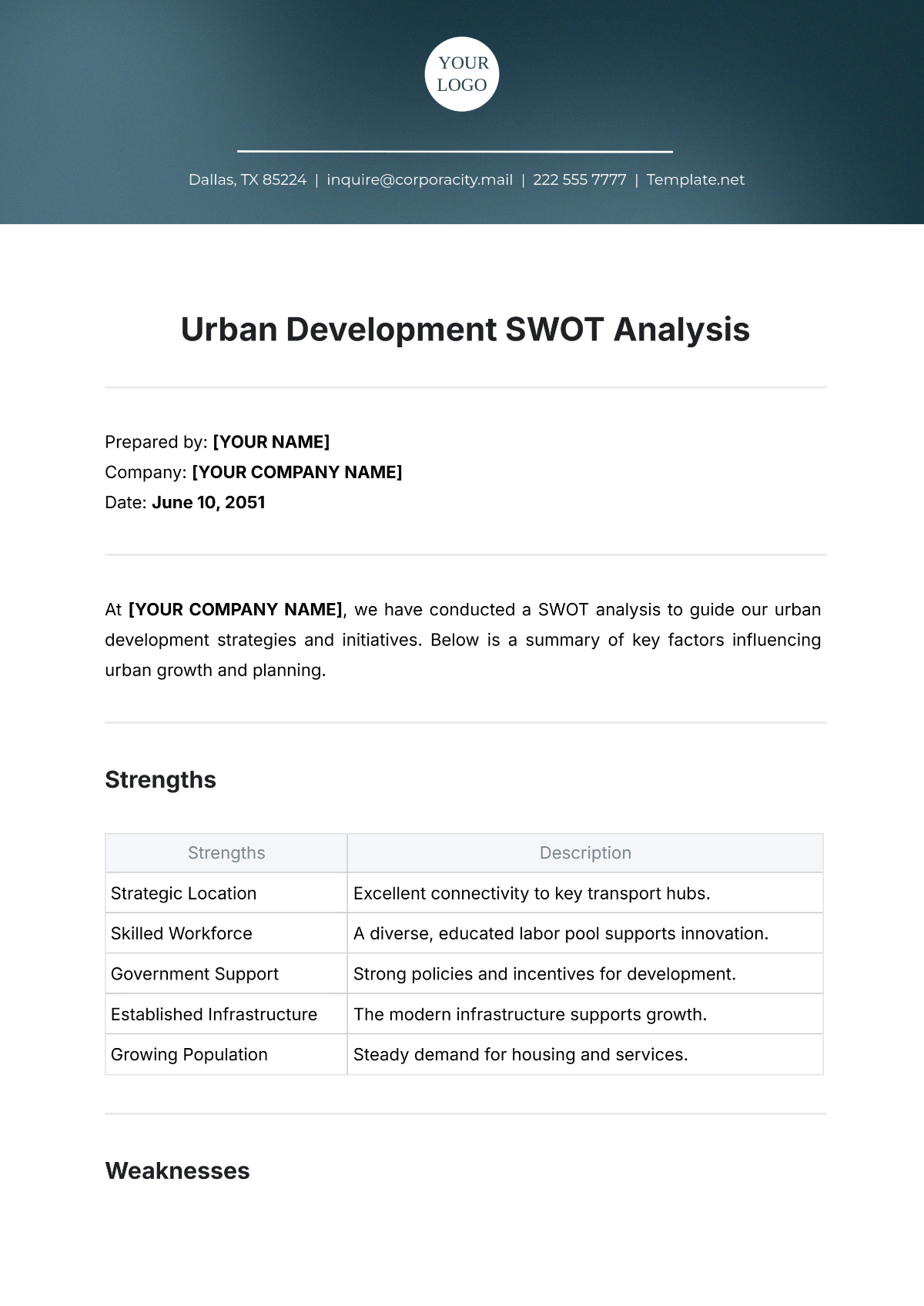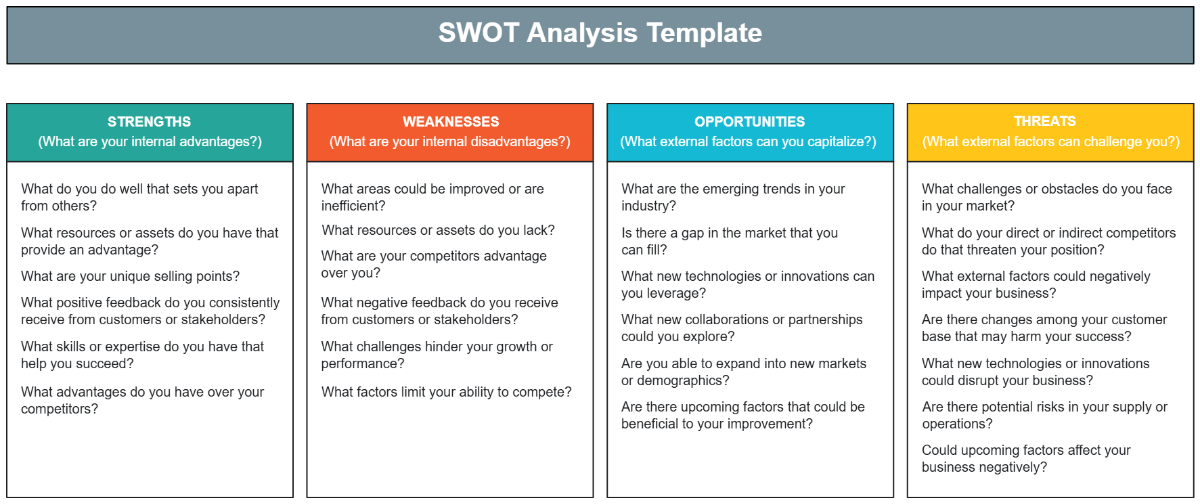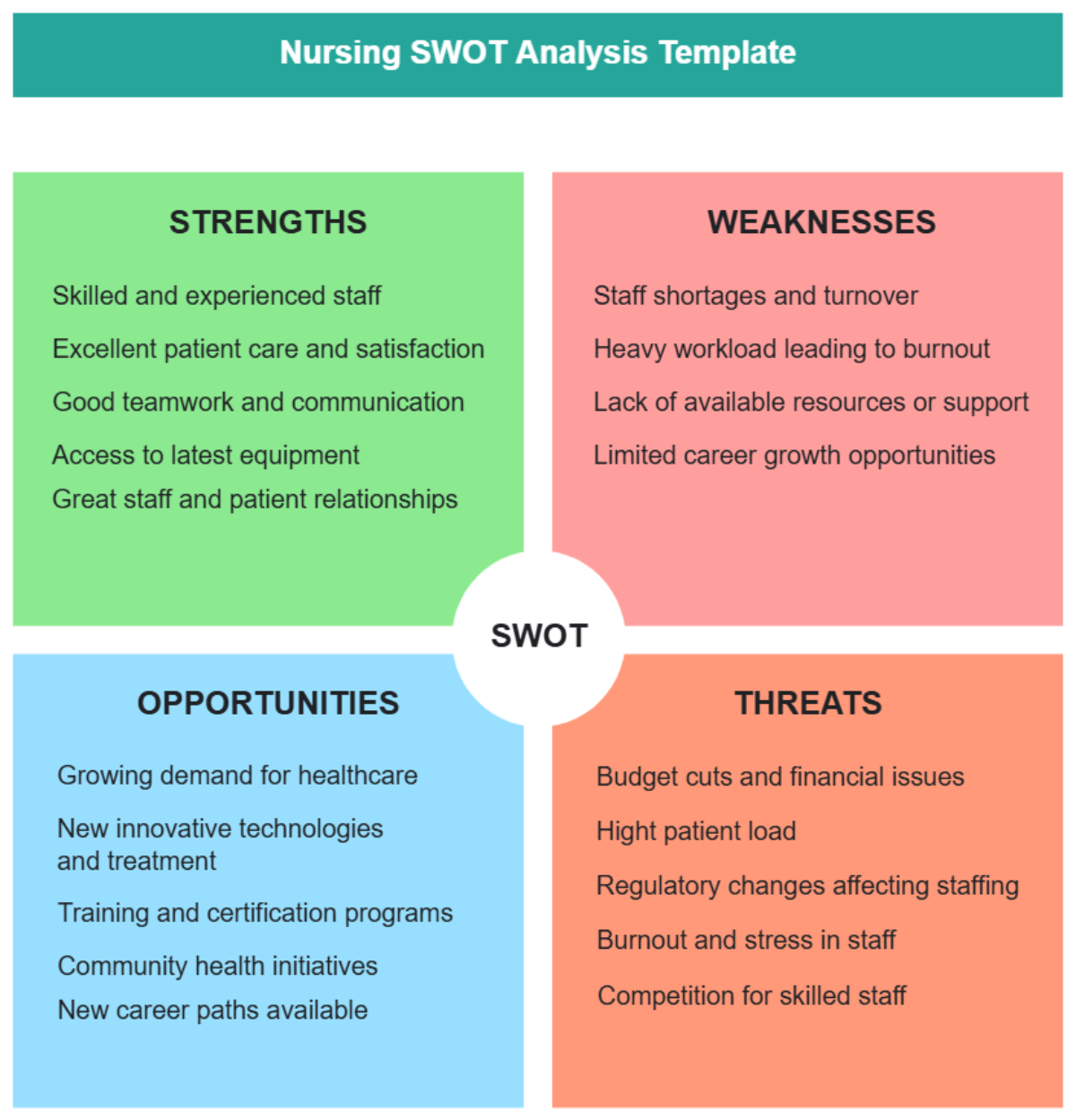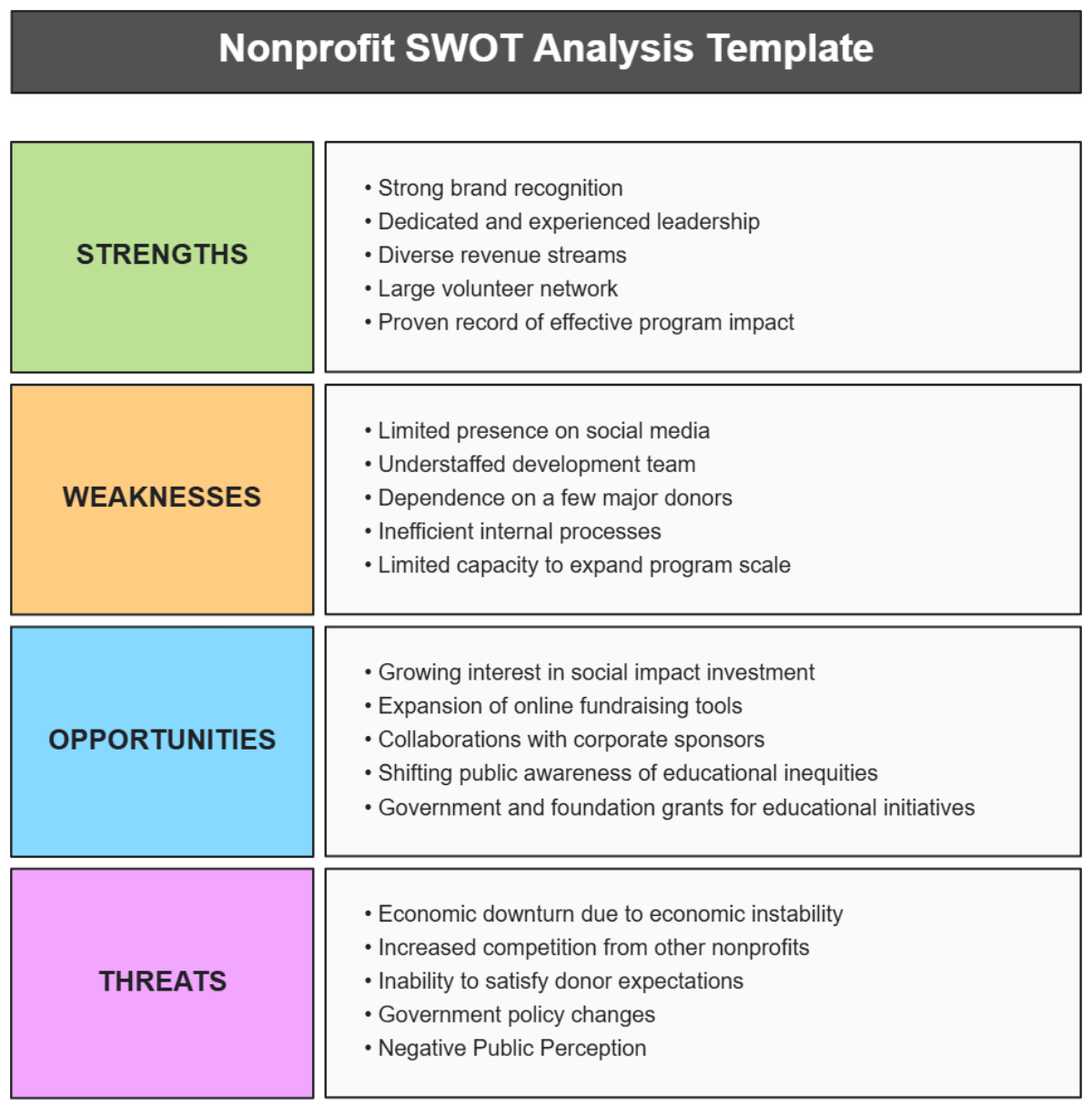Safety Swot Analysis
1. Introduction
This document presents an in-depth Safety SWOT Analysis for [Your Company Name]. The primary objective of this analysis is to systematically examine the safety aspects integral to the company's operations by identifying and evaluating its Strengths, Weaknesses, Opportunities, and Threats (SWOT). This approach is essential for ensuring a holistic understanding of the current safety environment within the organization and the external factors that may influence it.
The safety of employees, customers, and stakeholders is a paramount concern for any business. In today's fast-paced and ever-changing corporate landscape, it is crucial for companies like [Your Company Name] to remain vigilant about safety. This vigilance not only pertains to physical safety but also to the safety of data, operations, and business continuity. By assessing the company’s internal strengths and weaknesses, we can pinpoint areas where safety measures are robust and identify where improvements are needed. Additionally, exploring external opportunities and threats enables the company to anticipate and prepare for future safety challenges and trends.
This comprehensive analysis will serve as a foundational tool for [Your Company Name] in developing effective strategies to enhance safety protocols, invest in employee safety training, leverage technological advancements for safety improvements, and build a resilient and secure operational framework. The goal is not just to comply with current safety standards but to set a benchmark in the industry for safety excellence. Ultimately, this SWOT analysis will contribute to fostering a culture of safety that permeates all levels of the organization, ensuring that safety is not just a policy but a core value of [Your Company Name].
2. Company Details
History and Growth
[Your Company Name], founded in [Year of Establishment], began as a small-scale manufacturer specializing in [Type of Products Manufactured]. Over the years, it has grown into one of the leading manufacturing companies in the United States. The company prides itself on its commitment to innovation, quality, and sustainability, contributing significantly to the local economy and providing employment opportunities to over [Number of Employees] people.
Mission and Values
The mission of [Your Company Name] is to deliver high-quality products while ensuring the utmost safety and well-being of our employees and minimizing our environmental impact. Core values include integrity, excellence, and a commitment to continuous improvement in all aspects of our operations.
Health and Safety Initiatives
1. Safety Culture
[Your Company Name] has always prioritized a strong safety culture. The company believes that every accident is preventable, and this philosophy is deeply ingrained in every level of the organization. Regular safety training sessions, employee-led safety committees, and transparent communication about safety policies are standard practices.
2. Safety Policies
The company has a comprehensive set of safety policies, regularly updated to comply with the latest industry standards and regulatory requirements. These policies cover various aspects of workplace safety, including equipment handling, emergency response, and occupational health.
3. Safety Training and Education
All new hires undergo rigorous safety training, and existing employees receive ongoing education to keep up with the latest safety practices and technologies. Regular drills and workshops are conducted to ensure preparedness for any emergency.
4. Investment in Safety Technology
[Your Company Name] invests heavily in the latest safety technologies, including automated safety monitoring systems, advanced personal protective equipment, and ergonomic machinery design to reduce workplace injuries.
5. Health and Wellness Programs
Recognizing the importance of overall well-being, the company offers comprehensive health and wellness programs. These include regular health check-ups, mental health support, and fitness facilities.
6. Safety Performance Tracking
The company meticulously tracks safety performance using key indicators and regularly reviews and adjusts its safety strategies based on this data. Employee feedback is an integral part of this process, ensuring that the safety measures are not only top-down but also bottom-up.
7. Community and Environmental Health
Beyond internal safety, [Your Company Name] is committed to the health and safety of the community and environment. It adheres to strict environmental regulations and participates in community health initiatives.
3. Safety SWOT Analysis
This analysis is a strategic tool that stands for Strengths, Weaknesses, Opportunities, and Threats. It plays a pivotal role in understanding and improving the safety aspects of our operations. By systematically examining these four components, we aim to gain valuable insights into the internal and external factors that influence our safety performance and practices.
The purpose of this Safety SWOT Analysis is not only to identify and assess these factors but also to develop a strategic approach to leverage our strengths and opportunities while addressing our weaknesses and preparing for potential threats. This comprehensive evaluation will guide us in maintaining and enhancing a safe and secure work environment for all our employees and stakeholders.
3.1 Strengths
These strengths are internal positive factors that significantly contribute to our overall safety performance and set us apart in the industry. We have identified key areas where our company excels, each of which plays a crucial role in maintaining and enhancing our safety standards. These strengths not only reflect our current capabilities but also our commitment to continuous improvement in safety practices.
The table below outlines these strengths in detail, providing a clear description of each and its impact on our operations. Understanding these strengths allows us to build upon them, ensuring that we continue to provide a safe working environment for our employees and maintain the trust of our customers and stakeholders.
Strength | Description | Impact |
Robust Safety Policies | Comprehensive safety protocols that exceed industry standards. | High |
Trained Staff | Employees are regularly trained in safety practices. | Medium |
Modern Equipment | Use of up-to-date and well-maintained safety equipment. | High |
Safety Culture | Strong emphasis on safety in the company culture. | High |
Each of these strengths contributes in its own way to the high level of safety that [Your Company Name] upholds, reflecting our dedication to excellence in this critical area.
3.2 Weaknesses
In this section, we examine the weaknesses within the safety framework of [Your Company Name]. Identifying and understanding these internal areas of improvement is crucial for enhancing our safety protocols and reducing potential risks. While strengths are the pillars of our safety strategy, addressing these weaknesses is equally important to ensure a comprehensive approach to workplace safety.
The following table provides a detailed analysis of the key weaknesses identified in our safety operations, along with their descriptions and the impact they have on our organization. By acknowledging these weaknesses, we can develop targeted strategies to address and mitigate them, thereby strengthening our overall safety posture.
Weakness | Description | Impact |
Limited Emergency Drills | Infrequent safety drills leading to potential unpreparedness. | High |
Inadequate Reporting Systems | Subpar systems for reporting safety incidents. | Medium |
Over-reliance on Manual Processes | Dependence on manual safety checks can lead to errors. | Medium |
Addressing these weaknesses is imperative for [Your Company Name] to maintain a safe and secure working environment. Recognizing and actively working to improve these areas will not only enhance safety measures but also demonstrate our commitment to the well-being of our employees and stakeholders.
3.3 Opportunities
This section explores the opportunities available to [Your Company Name] in the context of safety. Opportunities are external factors or circumstances that, when seized, can significantly improve our safety standards and practices. They represent potential paths for growth and enhancement in our safety strategy, enabling us to address existing weaknesses and build on our strengths.
The table below outlines the key opportunities we have identified, providing a description of each and the potential benefits they offer. By capitalizing on these opportunities, [Your Company Name] can not only improve its safety protocols but also foster a more proactive safety culture within the organization and the industry at large.
Opportunity | Description | Potential Benefit |
Technology Integration | Implementing advanced safety technology (e.g., AI monitoring). | Enhanced Safety |
Collaboration | Partnering with safety experts or organizations for better practices. | Improved Standards |
Employee Engagement | Encouraging employee feedback on safety measures. | Increased Awareness |
Seizing these opportunities will enable [Your Company Name] to stay at the forefront of safety in our industry, ensuring a safe working environment for our employees and demonstrating our commitment to continuous improvement in safety practices.
3.4 Threats
In this final section of our Safety SWOT Analysis, we focus on the threats that [Your Company Name] faces in the realm of safety. Threats are external challenges or risks that could negatively impact our safety protocols and the well-being of our employees. Recognizing and preparing for these threats is essential for maintaining robust safety standards and ensuring the resilience of our operations against potential adverse events.
The table below provides a detailed overview of the key threats identified, along with their descriptions and the potential impact they could have on our organization. By understanding these threats, [Your Company Name] can take proactive measures to mitigate their effects and safeguard our operations.
Threat | Description | Potential Impact |
Regulatory Changes | Changes in safety regulations may require rapid adaptation. | High |
Environmental Risks | Potential hazards due to environmental factors. | Medium |
Cybersecurity Threats | Risks to safety management systems due to cyber threats. | High |
Addressing these threats is vital for [Your Company Name] to sustain a safe working environment and protect our assets and stakeholders. Our approach to managing these threats will be characterized by vigilance, adaptability, and a commitment to leveraging technology and best practices in risk management.
4. Conclusion
The comprehensive Safety SWOT Analysis conducted for [Your Company Name] has provided valuable insights into the various dimensions of our safety practices. It has highlighted critical areas where improvements can be made and strengths that can be further capitalized upon. The analysis underscores the importance of integrating advanced technologies and fostering greater employee engagement to enhance our safety profile. Addressing identified weaknesses, such as limited emergency drills and over-reliance on manual processes, is imperative to fortify our safety standards. Moreover, preparing for external threats, including regulatory changes and cybersecurity risks, is crucial for ensuring the continued safety and well-being of our employees and the smooth operation of our business. This analysis serves as a strategic guide for [Your Company Name], outlining a path towards not only compliance with safety norms but also excellence in creating a secure and safe working environment. By actively addressing these areas, we reaffirm our commitment to maintaining the highest standards of safety, reflecting our dedication to our employees, customers, and the broader community.
